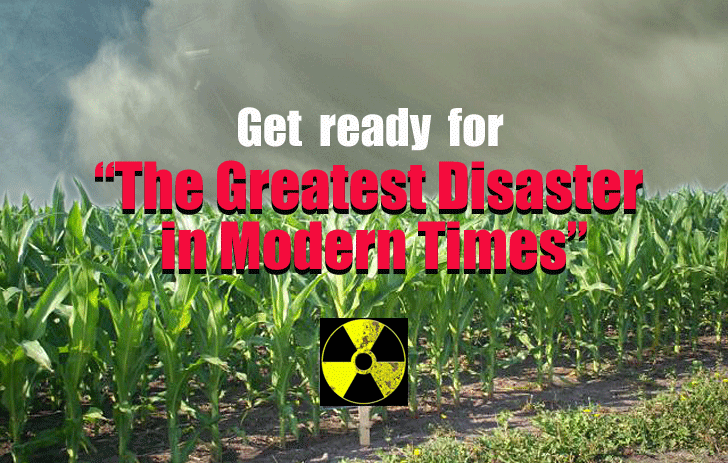
FOX news is raising the red flag about a 48% spike in Philadelphia infant deaths from Fukushima nuclear disaster!
June 17, 2011 -- FOX news is reporting the since Japan nuclear radiation was detected in Philadelphia drinking water at the high level in the nation, infant death rates have jumped 48% percent. The report also reveals that while infant death rates in the entire US have trended downward for the last 6 years, there has been a 2.3% increase in infant deaths since Fukushima nuclear radiation started bombarding the United States.
Update as of June 16, 2011 -- "Fukushima has three nuclear reactors exposed and four fuel cores exposed. You probably have the equivalent of 20 nuclear reactor cores because of the fuel cores, and they are all in desperate need of being cooled, and there is no means to cool them effectively." -- Arnold Gundersen, a former nuclear industry senior vice president.
TEPCO has been spraying water on several of the reactors and fuel cores, but this has led to even greater problems, such as radiation being emitted into the air in steam and evaporated sea water -- as well as generating hundreds of thousands of tons of highly radioactive sea water that has to be disposed of.
"The problem is how to keep it cool," says Gundersen. "They are pouring in water and the question is what are they going to do with the waste that comes out of that system, because it is going to contain plutonium and uranium. Where do you put the water?"
Even though the plant is now shut down, fission products such as uranium continue to generate heat, and therefore require cooling.
"The fuels are now a molten blob at the bottom of the reactor," Gundersen added. "TEPCO announced they had a melt through. A melt down is when the fuel collapses to the bottom of the reactor, and a melt through means it has melted through some layers. That blob is incredibly radioactive, and now you have water on top of it. The water picks up enormous amounts of radiation, so you add more water and you are generating hundreds of thousands of tons of highly radioactive water."
100-tons of water a day are used and collected, never to be used again at the TEPCO plant. They claim they will clean the water eventually... when they are not preoccupied by the meltdowns in #1, #2 and #3.
Robotic pictures of Reactor #3 showed almost no trace of the spent fuel pool. Scientists note that the containment vessel shows high temperatures but low pressure. This means there is no water in the vessel.
Nuclear fuel, including plutonium, was found up to 2 miles from the site, meaning that the explosion that took place in Reactor #3 after the tsunami was likely some type of thermal detonation. It's possible that the used fuel rods in the pool on Reactor #3 exploded and are no more. About 12500 fuel rods... disintegrated and spread around the area... plutonium and uranium.
Even worse, say scientists, is the fact that Iodine-131 continues to be released and detected. Since this element is released when a chain reaction is taking place, and since it has a half life of only 8 days, it means that some kind of criticality is happening inside the core right now. And it is uncontrolled. Radiation levels are so high that only robots can get near to evaluate how bad the problem is.
Reactor #4 is leaning, meaning the integrity of the building is in doubt. They are fearing another earthquake could bring it down. But the good news was that robotic pictures of the spent fuel pool showed it was intact, with minimal damage. So we know that this spent fuel pool has not contributed to the plutonium that has been found around the plant. It's looking more likely that Reactor #3 was the source of this plutonium contamination.
In short, there are 3 leaking containment vessels, a building about to collapse on its reactor and spent fuel pool, some type of chain reaction going on and three total meltdowns.
In the US, the Nuclear Regulatory Commission has enacted laws and regulations based on "zero probability" that a containment vessel would leak. And now we have one accident which has resulted in three "impossible" leaks. The entire nuclear energy policy needs urgent re-evaluation. But we may not even get that chance if the Japanese nuclear disaster continues on its present course.]
The Greatest Disasters in Modern Times
© 2011 By Gary Vey When I heard about the breach of the reactor vessels, the fires in the depleted fuel storage baths and the amount and type of radiation being leaked to the environment, I quickly checked the news sources to get information on what to do. Oddly, there was none. Instead, dozens of industry trained spokespersons were making statements about how "safe" atomic energy still is, repeating the mantra, "The current radiation poses no immediate health risk." NEWS: (MAY 12)-- It's Official: Fukushima Was Hit With a Nuclear Meltdown With names like Uranium, Plutonium, Strontium-90, Cesium-134, Xenon, Iodine-131, Chlorine-38, and Tellurium-129, it's hard for us ordinary people to understand what is actually happening. Most of us rely on "professionals" to tell us whether to worry about our safety and the dangers to our children and loved ones. While public relations specialists are telling us not to panic, at a recent gathering of international nuclear engineers, the current crisis is being described as "one of the greatest disasters in modern times."[1] Above, I wrote that "something" stopped me from writing this story. I suspect it is the same thing that is stopping media giants like CNN, BBC and even al Jazeera from focusing the public's attention on this catastrophe. That "something" is the truth. The current nuclear accident is so huge and deadly that it could easily exceed historic extinction events like the Black Death and Bubonic Plague. Even more frightening is the fact that it seems unstoppable.
We might suffer the consequences of reporting the truth in this article. Our advertising partner might decide to place public service banners on this page instead of revenue generating ads. We need readers "clicks" on commercial ad banners to keep our web site viable. So there is always subtle pressure to censor certain stories whenever the media is a business. Censorship at work In the middle of the Japanese nuclear crisis, on April 11, 2011, as the cloud of radiation reached the West Coast [above right] and was contaminating milk and vegetables from California [2][10] to Massachusetts, here is what CNN had as their top stories:
 Aside from some cellphone footage of the tsunami and a photo essay on the debris, there is nothing about the escalating nuclear crisis. Zip. Nada. And when you do get news in bits and pieces, it is often contradictory. An example is the report concerning the spent fuel rods in Fukushima's unit number 4. These contain Uranium and extremely toxic Plutonium. As the temperature rises to twice the normal level in water baths that store and cool these rods, concern is growing about the condition of the rods and whether they may have deteriorated and are releasing radioactive particles. Here is their report (CNN): "The company said it suspects the fuel rods were damaged due to insufficient coolant at some point since the crisis began, but could not clarify the timing. Huh? Which is it? While there is concern over clouds of Xenon and Cesium sweeping over the US, that all pales in significance to Plutonium. A particle the size of a speck of dust can cause cancer. It is now known that the storage tanks in unit #3 (containing Plutonium) were completely blow apart and do not show up on recent images taken by a drone. As many as 1200 fuel rods were fragmented and thrown up in the atmosphere. Plutonium particles were carried high into the jet stream by the plume of extremely hot gas associated with the huge hydrogen explosion and fire in this unit [below] on March 14th, 2011. Meanwhile, unit 4 contains 1,535 spent fuel rods in the spent fuel pool, the largest amount at the site, and the pool is overheating. The building has been severely damaged and is in danger of collapse. To some, this is the most troubling unit. If these fuel rods blew up the radiation release would be of epic proportions. [see hi-resolution photos of unit #3 and #4]
"About Japan: the problem is that the reactor uses "dirty" fuel. It is a combination of plutonium and uranium (MOX). I suspect that the old fuel rods have bean spread out due to the explosion and the surrounding area is contaminated with plutonium which means you can never return to this place again. It is like a new Tchernobyl. Personally, I am not surprised that the authority has not informed people about this." Huffington Post (May 9, 2011)
 Shortly after this explosion, 13,500 TONS of highly radioactive water, containing plutonium, were dumped into the Pacific Ocean. This is presumably to make room for more water which will be even more radioactive. Where will all this toxic water go? Some have suggested that an oil tanker should collect the water... but then what will they do with the tanker? It's a problem that has no apparent solution.
The radioactive material coming from the Japanese nuke plant is a type of ionized radiation called radioisotopes.
The rate at which the particular atoms release their unstable neutrons, protons and other energy is measured as its half-life. This is a theoretical measurement of how long it takes for a group of unstable atoms of the same element to reach 50% stability. Sometimes the unstable atoms lose protons as well as neutrons in their attempt to become more stable. The loss of protons makes the atoms an entirely different element. This new element can often be unstable also and will continue to shed nuclear particles. It can have an entirely different half-life and these new elements can be even more radioactive than their predecessors. Radioisotopes with a short half-life decay rapidly, while those with a long half-life remain radioactive for a longer time. In the case of the radioisotopes associated with the Japanese nuke disaster, here are the following half-life statistics: [3]
Here is a video with some "truth" that made it to the main stream media:
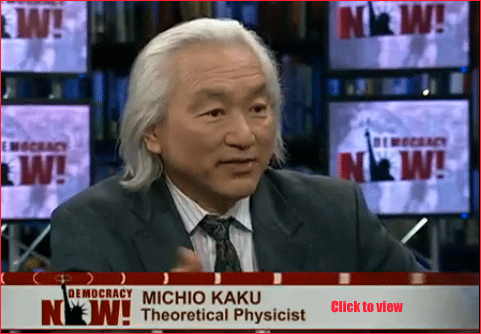 Threat to World's Food Supply While cancers may take years to kill, starvation and the resulting social breakdown could be the most immediate consequence of this disaster. Almost within hours of the initial blast and release of radiation from the Japanese nuclear facility, radiation was heading towards North America on the Pacific jet stream. Radiation levels 25 times the safety limit were measured in fish caught off the coast of the Fukushima plant. [5] Washington state was first to report contaminated milk and dairy products in North America, followed by California's discovery of Cesium in spinach, arugula and kale [4] and more Cesium and Iodine-131 in milk from Hawaii [6]. The "Bread basket of the world" -- Wheat & Corn The U.S. produces about 13% of the world's wheat and supplies about 25% of the world's wheat export market. About two-thirds of total U.S. wheat production comes from the Great Plains --from Texas to Montana. Wheat is classified by time of year planted, hardness, and color (e.g. Hard Red Winter or HRW). The characteristics of each class of wheat affect milling and baking when used in food products. Of the wheat consumed in the United States, over 70% is used for food products, about 22% is used for animal feed and residuals, and the remainder is used for seed.
Corn is America's number one crop, being twice that of any other farmed crop. Corn is used in virtually everything we eat (flour, cattle and chicken feed) and drink (corn syrup) and even powers our automobiles (ethanol). About 75% of corn is consumed in the US with the balance being exported. In corn, DNA damage was done at a level of 15,000 rads. Again, this is much higher than we could expect from the current disaster but the concern is for particulate matter which would contaminate the crop and its various products. Since it is the main source of food, the cumulative effects on human consumption would be dramatic. But, in fact, regulations by the Food and Drug Administration (FDA) would ban the distribution of tainted food and its byproducts leaving grocery shelves empty and many people going without food. Iodine-131: More is better! Ioding-131 is frequently in the news. We are told "don't worry about it" because the levels are low. But paradoxically, it is the low dose that is the most dangerous.
"Due to its mode of beta decay, iodine-131 is notable for causing mutation and death in cells which it penetrates, and other cells up to several millimeters away. For this reason, high doses of the isotope are sometimes paradoxically less dangerous than low doses, since they tend to kill thyroid tissues which would otherwise become cancerous as a result of the radiation. For example, children treated with moderate dose of I-131 for thyroid adenomas had a detectable increase in thyroid cancer, but children treated with a much higher dose did not. Similarly most studies of very high dose I-131 for treatment of Graves disease have failed to find any increase in thyroid cancer, even though there is linear increase in thyroid cancer risk with I-131 absorption at moderate doses. [11] Iodine-131 is a ionized radioisotope created from the fission of Uranium. The fact that it appears as one of the toxic, radioactive chemicals coming from the Fukushima Nuclear plant indicates that some of the spent fuel rod storage ponds have been damaged, allowing an accidental (and ongoing) chain reaction to occur. As I-131 comprises only less than 3% of the total radioactive yield of Uranium fission, the amount recorded around the Northern Hemisphere hints at the enormous problems yet to be revealed. Cesium stays in the soil for decades One of the radioisotopes that has been shown to be in the leaking radiation from Japan is Cesium-137, which has a half-life of around 30 years. This will present a problem for most all vegetables and crops grown above ground. Even today, after 25 years, certain mushrooms grown in parts of southern Germany have been shown to contain Cesium-137, due to fallout from the Chernobyl disaster. If people eat foods contaminated with cesium-137, it can build up in the body and spread to the blood and muscles. Cesium is known to cause lung and gastro-intestinal cancers. It's possible that government agencies may declare low levels of Cesium "safe" for human consumption, based on the premise that it causes "no immediate health risk", but it is the cumulative effect of these radioactive particles that eventually pose the biggest risk to our health. Again, NO amount of ionized radiation is safe.
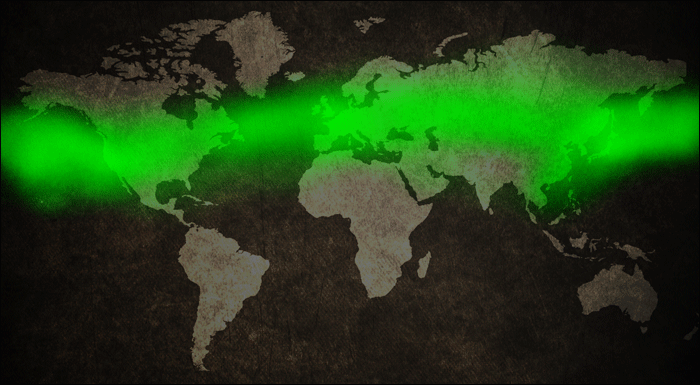 The authorities at the Fukushima nuclear plant just announced that the situation was a "Level 7" event, making it the worst possible case, on a par with Chernobyl which caused an estimated million deaths [9]. But it is clearly much worse than Chernobyl. The cloud of radiation which is just now beginning to circle the globe will continue for many years, getting more dense and dropping more particles of deadly radioisotopes on people, water supplies and crops. With no solution in sight and no honest admission of how bad it really is, we truly are facing "The greatest disaster in modern times." God help us all.
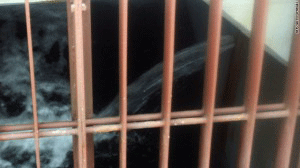 [above: Fukushima nuclear plant dumping highly radioactive water in to Pacific.]
"See, I will make this people eat bitter food and drink poisoned water."--Jeremiah 9:15
Notes:
[1] http://vimeo.com/22062314 [2] http://www.nuc.berkeley.edu/node/2525 [3] Tochner ZA, Glatstein E, "Chapter 216: Radiation Bioterrorism," in Harrison's Principles of Internal Medicine, 17th Edition, Fauci AS, Longo DL, Kasper DL, Braunwald E, Jameson JL, Loscalzo J, Hauser SL, eds., pp. 1358-1364, McGraw Hill, 2008. Management of Persons Contaminated With Radionuclides: Handbook (NCRP Report No. 161, Volume 1), National Council on Radiation Protection and Measurements, Bethesda, MD, 2008. Summary of Radioactive Properties for Selected Radionuclides (PDF - 145 KB) (Human Health Fact Sheet, Argonne National Laboratories, 2005) Radiological and Chemical Fact Sheets to Support Health Risk Analyses for Contaminated Areas (PDF - 2.34 MB) (Argonne National Laboratories, 2007) [4] http://www.nuc.berkeley.edu/node/2525 [5] http://www3.nhk.or.jp/daily/english/14_03.html [6] http://www.staradvertiser.com/news/hawaiinews/20110412_Traces_of_radiation_found_in_isle_milk.html [7] Tom Roberts, Gary McDonald, Elmer Lehman, ND Eckhoff, Richard Vonderlip, HD Wilkens, RW Clack, Effects of Radiation on Wheat Germination Transactions of the Kansas Academy of Science, Vol. 73, No. 1 (1970) [8] How radiation affects corn, Bulletin of Atomic Scientists, Vol. 5, No. 11. November (1949) [9] Chernobyl: Consequences of the Catastrophe for People and the Environment, ISBN-10: 9781573317573, (2010). [10] http://www.nuc.berkeley.edu/node/2174 [11] The Management of Graves’ Disease in Children, with Special Emphasis on Radioiodine Treatment. Scott A. Rivkees, Charles Sklar and Michael Freemark J. Clin. Endocrinol. Metab. 1998 83: 3767-3776, doi: 10.1210/jc.83.11.3767
Rense & Yoichi Shumatsu discuss the current sitution of the Fukushima Nuclear Reactors disaster, describes how this may be an "extinction event." Leuren Moret: Fukushima Nuclear Death Is Coming To The World 1/12 *** LINK HERE (CLICK) *** TEPCO official reveals "little doubt" that plutonium has leaked. *** LINK HERE (CLICK) ***
Gundersen Discusses Current Conditions of Reactors in Unit 1, 2 and 3. US (and Europe, Asia) Current Radiation Levels [MAP] *** LINK HERE (CLICK) *** Animated Jet Stream Plume Map (Predicted) *** LINK HERE (CLICK) ***
COMMENTS: It's May 30 2011 and I have not heard a word in over a month about the the "WORLDS" nuclear disaster plenty of May 21st rapture news and oh ya Lindsey Lohan has house arrest, Heraldo where are you? think I'll start a twitter Justin Beiber nuclear disaster so people will read it Rod B
Dear Gary, Then there is the threat that all over the world they sit on fault lines and soon the earth will be totally irradiated and just maybe all life here will end. The earthquakes have in creased in number and frequency all over the world and it wont stop here. We are in for Mr. Toad's Wild Ride for sure. There are 17 alone on the New Madrid fault and in California I am sure there are some too. So what good is information if it can not fix or aid us in being safe? GrinNBarrett I suggest we all ger involved instead of expecting so-called experts to find a solution. We need ideas. Would it not be possible to use those boring machines to make a tunnel under the nuke units and then somehow lower them underground where the radiation can be contained? This seems like a far better plan than encasing them in cement. Michael B. Reader's Comments: Hi Gary, Good that you are bringing this need for readiness to the public. You will not find the media discussing this because they are really not in the "information" business. They are rather in the advertising business. This kind of needed talk doesn't set well with selling automobiles.
Sure, you should think about the future, where you will go and who you will be with. But life sometimes throws quick punches at us and it may be that you have no time to make elaborate plans... Maybe you on the West Coast and a toxic gas cloud from the Fukushima nuclear disaster is heading to your neighbohood... This is what a bug out bag is for. You need something that you can have ready to grab as you are running out your door. Each person in your family should have one. Preferably this is a backpack -- something you can strap on your back because you may need your arms and hands to climb or help others. Inside the bag you should have everything you need to survive for three days -- at least. Many people have given lots of thought to what you should have in your bag. This has come from experience, so the list is something you need to consider seriously:
These are the basics. Add more depending on what you can carry and what you anticipate in your own particular area of the world. Passports and important identification papers should be in a water proof pouch... think I thought of everything. Please post this, Gary, as it is really important. M.S. The reactors can NEVER be placed in 'cold shutdown' because the cores are partially melted together. We are talking about hundreds of tons of fissile material inside reinforced concrete containment vessels. The containment vessels are cracked. They are releasing radiation. Fission excursions are still occurring and no one can go inside those containments for hundreds of years - even if they could crack one open. They can continue to pour water on them and drain it off into the ocean because there is nothing else they can do. If they stop pumping water, the genie comes out. If they keep pumping water, it has to go somewhere and that somewhere is the ocean. It is still stop gap. Those reactor cores cannot be put into 'cold shutdown' or dismantled or entombed. Never. T.B. We live in the Seattle area and have been getting hot readings on our small gieger counter with the rains. I don't think it is serious but it does kind of scare me when I hear the rapid clicks. I am a bit afraid to eat the fish that is caught off shore and was yelled at when I brought my gieger counter to the fish market. Also, some people I meet really don't want to even talk about this whole mess. They get very angry and tell me to shut up about it. I think it is a kind of denial because they cannot do anything about it. But I think we all need to be real and talk about what is happening so we can make changes. We owe it to our children and their children. Just my two cents. Paula S. Gary You are so right about the media not wanting to cover this story. I think you nailed it with the comment about ad revenue. Seems greed and money started this whole thing with a way to make cheap energy and now that this has happened the same greedy types want to hide what is coming. Guess its time to get the bug-out-bag ready and keep the car gassed up. When the plutonium starts coming no one will want to be around! Thanks for the honest facts. Bartom43 To Michael B: There are any number of reasons why burying the nuclear vessels would make the situation worse. First, because they are extremely hot, they would explode when they came in contact with the ground water. The explosion would distribute the radioactive material to a wider area, making it harder to clean up and poisoning many people in the surrounding area. There is also the problem of contaminating the ground water, even if there were no explosion, and this is needed for the people of Japan to drink. And let's not forget the earthquakes that continue to rattle the region. This would make any subterranean project dangerous. A different solution would be to pile dirt over the units. This would require moving a mountain of dirt and sand and would need some kind of robotics since it would be impossible to get close to the source of he radiation. Yes, it is necessary to think of every possible solution. So fat, though, we are realizing that we were dealing with a material that we did not have the technology to control or manage safely and we are paying the price. To GrinNBarrett: What can we do about it? For one thing we can get informed and stand together against the corporations who eve now insist that nuclear energy is safe. United we can hopefully prevent more of these accidents and begin to close and clean up the mess that has already been made all over the planet. E.Holdbrook Viewzone: At the end of the story you say "G-d help us!" I think this is what we should be doing. Asking Jesus to save us. We need to pray. This problem is maybe a sign that we have gone astay from the Lord. So everyone should pray. CelesteB It astounds me that nuclear technology was commercialised at a time when there clearly wasn’t the knowledge or experience of how to contain the processes, if they got out of control, nor how to dispose of the waste, which must be in the order of thousands of tonnes by now.
Insanity, pure and simple. And it goes on............................. a case in point, Jeffrey Immelt, CEO of General Electric (designers of the Fukushima reactors by the way). A Star is a nuclear Phenomenon. Rev 8:5 And the angel took the censer, and filled it with fire of the altar, and cast it into the earth: and there were voices, and thunderings, and lightnings, and an earthquake. "Earthquake" Rev 8:7 ... and the third part of trees was burnt up, and all green grass was burnt up. Rev 8:9 And the third part of the creatures which were in the sea, and had life, died; and the third part of the ships were destroyed. Rev 8:11 And the name of the star is called Wormwood: and the third part of the waters became wormwood; and many men died of the waters, because they were made bitter. The nuclear fuel is burning as a "STAR" does. In Russia the word "WORMWOOD" is pronounced "Chernobyl".Anonymous Here Lies the Pacific Ocean: Born: Millions of years ago Died: March 11, 2011 R.I.P. After 5 Halflives, Iodine-131 is higher than Cesium-134/137 -- suggests ongoing fission in Fukushima reactors! Not good news. April 21, 2011: It seemed very bad taste for April Fool's jokes, but a few weeks ago there were some very bizarre indications of ongoing criticalities suggested by TEPCO's own reporting of Cl-38 in "stagnant water" of a drywell, plus, a "neutron beam" again implausibly claimed by Kyodo news to be observed at 2-km distance. All those things seemed to defy the laws of physics and were highly suspect, but they led Arnie Gunderson, Arjun Makhijani, and Chris Martenson all to conclude that the evidence pointed to ongoing fission in the Units 1-4 scrammed reactors and their SNF pools in warm shutdown. Maybe so. Everyone with just a very basic understanding of reactor safety should know that once a reactor is scrammed, U-235 is no longer fissioning, and I-131 has no parent which can be decaying to create it in an ongoing process. SNF pools contain the million-year halflife I-129 which is difficult to measure, but the water circulating in intact SNF pools should have absolutely no detectable I-131 in them. Units 1,2, and 3 all scrammed (shut down) 3/11/2011, so it has been almost five full 8-day halflives for their I-131 to decay to stable xenon. At t=0, as we say, the Bq of I-131 and Cs-134 and Cs-137 would all be approximately equal, but, after five I-131 halflives, the "reactor density" radioactivity of I-131 should be only 1/2**5=~3% of what it was originally. Go look at all the data of relative radioactivity that TEPCO is reporting with dates of April 19, 2011 and you'll see that instead of I-131 being below the levels of the two cesiums, I-131 is often twice as high as the two cesiums always reported. Sure, iodine is more volatile than cesium, so, when you have an almost total fuel melt (in a "classic" release to atmosphere accident), 100% of the iodines can be released while maybe at most 35% of the cesium is released outside containment because the iodine can come out as vapor, while the cesium comes out as aerosol subject to agglomeration and also chemical binding with the concrete basemat. The fact that nobody in Japan seems to know basics of reactor accident progression that I learned at Sandia Labs in early 1980s is truly scary, because it suggests they are playing with these broken/leaking reactors and SNF pools inside at least three buildings totally destroyed by steam explosions ... as if the reactors and their SNF pools are broken toys that they're using trial and error to try fixing. from http://www.glgroup.com It's Official: Fukushima Was Hit With a Nuclear Meltdown  [Sam Biddle] -- The flow of bad news (and radiation) out of Fukushima's reactors has diminished to a trickle over the past several weeks, as rescue work has proceeded. Not today. TEPCO's admitted for the first time that Fukushima experienced a grave meltdown. What exactly is a meltdown, you might ask? There's a lot of confusion as to what constitutes a "full" or "partial" meltdown -- neither is a strictly technical term, though in the popular usage of the word, today's revelation leans more towards the former. David Brenner, director of the Columbia University Center for Radiological Research, describes a "partial meltdown" as "fuel that's been damaged and partially melted. Some of the fuel has probably been oxidized and breached and melted at the top of the core where the heat rises." MIT nuclear scientist Ron Ballinger describes a "full meltdown" as when fuel "would melt into the bottom of the vessel. Then you get to this theoretical point where if they can't cool it, then eventually the vessel itself, the steel, would melt, and you'd end up with a bunch of melted fuel and steel on the bottom of the concrete faceplate of the plant, in the containment vessel. And then it would have to get out of there." Today's news indicates something much closer to the latter scenario. The possibility of a meltdown has been floating in the air since the earthquake and subsequent explosions first rocked the roof off of Fukushima, spreading radiation, confusion, and displacement across the local populace (and beyond). Since then, TEPCO workers and the Japanese government have desperately struggled to keep the nuclear fuel rods inside the reactors cool -- if they don't, the scorching material will melt into a pool of radioactive lava, further damaging the facility. That's the scenario everyone's been aiming to avoid—and that's the scenario we now know had actually occurred all along. Underneath all that dumped seawater has been lying a blob of melted fuel. And it could be melting its way out. This admittance goes against every assurance TEPCO has handed the world in the midst of Japan's nuclear crisis -- that the situation was bad, but that with emergency work, the plant would be mostly stable, and could be safely shutdown within the year. The worry now, beyond the fact that the damage to the reactor is far worse than imagined, is that a hole in the facility will lead incredibly contaminated water leak out like a faucet. A scalding, radioactive faucet. So now what? "We will have to revise our plans," Junichi Matsumoto, a TEPCO rep, told The Telegraph. To say the least. [The Telegraph and Kyodo News] Gary, get a ook at CNN's website on the day they announced that Reactor #1 was having a total meltdown that could not be stopped. Not a word! Wow. Something is really going on. This is not right.
 Japan? What's that? M.McD. Yes. Let's all eat dessert every day and be happy! Greg L. I have read rumors online that people are noticing the major outlets are posting articles briefly and pulling them off the web after an hour or two -- in other words some people believe additional media control is now in place. It does seem to me that, in the US at least, there is even less coverage and this comes very soon after CNN featured a story on Fukushima. I wonder if additional media control really is in place now -- why is it even quieter than it was before? anonymous
|

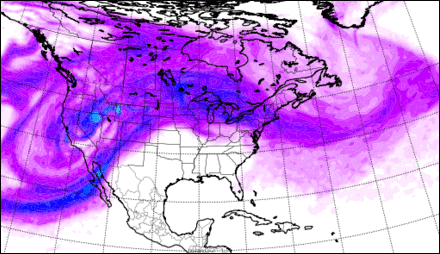 With the news being so hopeless, there is little reward for broadcasting this doom and gloom in the media. News has become a form of entertainment or, as one executive of a large cable network put it, "News is the filler between paid commercials to make you watch them." Reminding viewers of a hopeless future full of cancer, starvation and sickness does little to encourage them to buy new cars or appliances.
With the news being so hopeless, there is little reward for broadcasting this doom and gloom in the media. News has become a form of entertainment or, as one executive of a large cable network put it, "News is the filler between paid commercials to make you watch them." Reminding viewers of a hopeless future full of cancer, starvation and sickness does little to encourage them to buy new cars or appliances.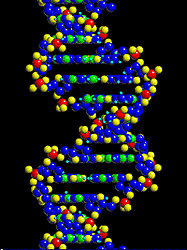 The DNA molecule is made up of many different atoms which are held together by the electrons in their outer shell. Each atom has a specific number of electrons that allows it to attach or bind to other atoms. By changing the number of electrons in the outer shell of one atom, it cannot bind with its correct mate and mutations in the genetic code occur which eventually result in cancer.
The DNA molecule is made up of many different atoms which are held together by the electrons in their outer shell. Each atom has a specific number of electrons that allows it to attach or bind to other atoms. By changing the number of electrons in the outer shell of one atom, it cannot bind with its correct mate and mutations in the genetic code occur which eventually result in cancer.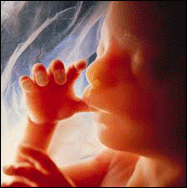 Most of what we know about radiation and cancer comes from studying the atomic bomb survivors in Japan, people exposed during the Chernobyl nuclear accident, people treated with high doses of radiation for cancer and other conditions, and people exposed to high levels of radiation at work, such as uranium miners. Because these individuals were exposed to high levels of ionized radiation, the cause of their cancers and deaths are easy to assess. It's not so easy with lower exposures.
Most of what we know about radiation and cancer comes from studying the atomic bomb survivors in Japan, people exposed during the Chernobyl nuclear accident, people treated with high doses of radiation for cancer and other conditions, and people exposed to high levels of radiation at work, such as uranium miners. Because these individuals were exposed to high levels of ionized radiation, the cause of their cancers and deaths are easy to assess. It's not so easy with lower exposures.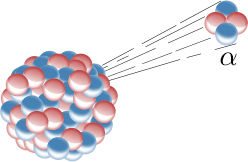 Radioisotopes are atomic elements that have an unstable nucleus. This means that they have extra neutrons in addition to their nuclear protons. In attempting to become stable, these atoms shed chunks of their nuclear material, releasing particles that shoot off in space at near the speed of light. These particles are the ionized radiation that can cause cancer.
Radioisotopes are atomic elements that have an unstable nucleus. This means that they have extra neutrons in addition to their nuclear protons. In attempting to become stable, these atoms shed chunks of their nuclear material, releasing particles that shoot off in space at near the speed of light. These particles are the ionized radiation that can cause cancer.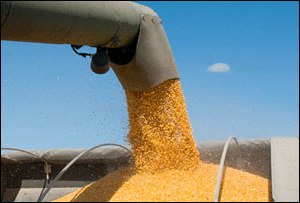 Studies have shown that wheat will germinate and grow in moderate radiation below 30,000 kilo rads.[7] Exposure of seeds to higher radiation causes mutations or death, but this level is more than would ever be encountered from the Japanese nuke accident. The real danger is from particulate matter which may be dropped on the wheat from contaminated rain or dust.
Studies have shown that wheat will germinate and grow in moderate radiation below 30,000 kilo rads.[7] Exposure of seeds to higher radiation causes mutations or death, but this level is more than would ever be encountered from the Japanese nuke accident. The real danger is from particulate matter which may be dropped on the wheat from contaminated rain or dust.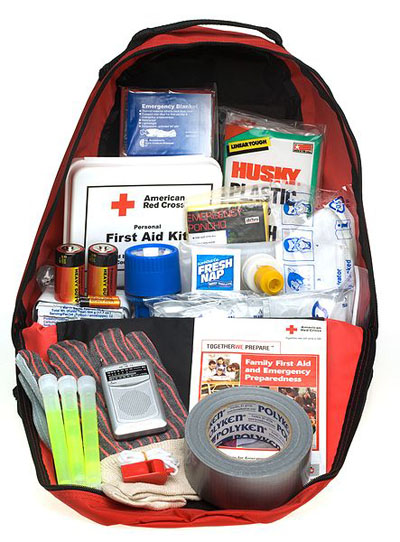 But I am writing because you maybe have forgotten a very important thing that everyone should be doing right now! I'm speaking about what is called a "bug out bag."
But I am writing because you maybe have forgotten a very important thing that everyone should be doing right now! I'm speaking about what is called a "bug out bag."